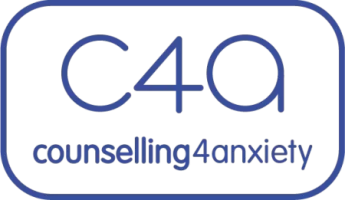If you're struggling with anxiety symptoms—racing thoughts, tight shoulders, trouble sleeping, or overwhelming worry—you're not alone. These signs of anxiety are common, and many arrive seeking tools that bring real relief. I’m here to walk beside you.
Why Relaxation & Coping Strategies Matter?
Anxiety can hijack your nervous system, keeping you stuck in a cycle of fight-or-flight responses—racing heart, rapid breathing, irritability, and fatigue. That's why mastering relaxation techniques, mindfulness, and CBT coping strategies is crucial. They help shift your mind and body from survival mode to a place of calm and safety. However, these techniques need repeated practice to allow your amygdala and nervous system to reduce the sense of hyper-stimulation that they may feel.
Stage 1: Grounding to Reduce Anxiety
Popular grounding tools include the 5-4-3-2-1 technique and sensory engagement. These are proven ways to bring awareness back to the present moment and ease acute stress and anxiety symptoms.
Try This: 5-4-3-2-1 Grounding Say out loud:
5 things you see,
4 things you feel,
3 things you hear,
2 things you smell,
1 thing you taste.
Allow your external curiosity to grow and go with it!
Stage 2: Breathing & Mindfulness
Diaphragmatic breathing and box breathing are core mindfulness techniques often used in CBT for anxiety.
Try This: Box Breathing: Breathe in 4 seconds,
Hold 4 seconds,
Breathe out 4 seconds,
Hold 4 seconds.
Repeat 4–6 times.
Remember in-between cycles to allow your breath to come back to normal.
Stage 3: Physical Tension Release
Progressive muscle relaxation (PMR) helps you notice and release muscle tension—commonly in the jaw, shoulders, and chest—reducing your anxiety triggers.
Try This: Clench and hold each muscle group (toes → jaw), then release, noticing the sensation of letting go. Noticing the difference between the clenching and releasing of muscles is key.
Stage 4: Using Guided Imagery or 'Internal' Visualization to Build Safe Space
Guided imagery or safe place visualization creates an internal refuge. This is a powerful anxiety coping technique when stress intensifies.
Try This: Close your eyes. Picture a safe place—beach, forest, room. Explore colours, textures, smells, and sounds. Use your imagination and your sensory abilities to connect with visualisations of sights and sounds that may come up.
Stage 5: Identifying Triggers & Thought Patterns
Deepening relaxation means digging into what fuels your worry—like work stress, social anxiety, caffeine, or lack of sleep. In therapy, we often use journaling, thought records, or CBT worksheets to track anxiety triggers, reduce avoidance, and reshape negative self-talk.
A Warm Invitation to Connect
If these tools resonate but you find relief still slipping away, that makes sense—many people need a bit more support. In my practice, I specialize in:
- One-on-one anxiety therapy
- CBT for anxiety, mindfulness training, and trauma-informed care
- Helping you explore generalized anxiety disorder (GAD), social anxiety disorder, panic attacks, or situational anxiety
Together, we can build your personalized anxiety management toolkit—combining relaxation techniques, coping strategies, and therapeutic support.
Ready to Get Help?
You deserve a life with more calm, confidence, and freedom. If you’re searching for an anxiety therapist in person or online or need mental health services for anxiety, let’s connect. You can reach out to me here to book a free initial consultation.
You don’t have to face this alone—help is available, and you can reclaim your calm, one breath at a time.

